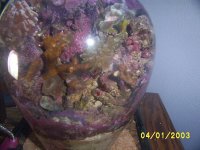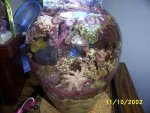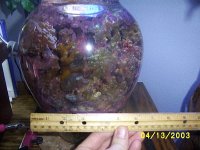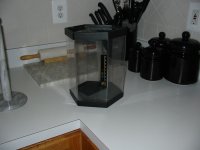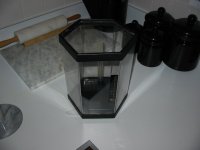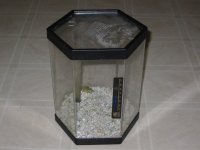Hello Joey,
Well, I too took this idea about my nano dsb to Dr. Shimek because mine was bubbling, little clear bubbles among patches of algae. It was deep in the bed, in portions I thought were hopefully reducing. he came up with a simple and opposite idea--the bed was aerobic due to patches of algae photosynthesizing on the glass walls next to the DSB (on the glass). This may not make the same difference in the larger DSB in your 20. Also, if your bubbles are coming from patches of brown detritus as opposed to green/red/brown algae spots there may be differences in gas quality.
It made me wonder: what if you painted the tank black around the sandbed portion and hide it--block out light from all sides to the bed. increase depth and decrease grain size; there just has to be a way of adjusting physical parameters to restrict oxygen permeability. What about using a sheet of plastic as a division in a bed, would oxygen readily pass that screen? What effect will this have on sandbed fauna?
I never take all the statements about nano DSB's as a turn-off, it just means it can't be done under the same scaling as conventional reefs (sand bed takes up 1/6 tank depth). Some mystery variable needs to be exaggerated or enhanced to make this possible in nano aquariums...still looking
id like to ask a chemist for the ways to test a dsb for nitrogen vs. O production ---would there be notable pH differences or maybe something an oxygen probe could detect? its important to be able to tell by analysis rather than by sight...before any experiment gets started.
Whats your take?
Brandon
Well, I too took this idea about my nano dsb to Dr. Shimek because mine was bubbling, little clear bubbles among patches of algae. It was deep in the bed, in portions I thought were hopefully reducing. he came up with a simple and opposite idea--the bed was aerobic due to patches of algae photosynthesizing on the glass walls next to the DSB (on the glass). This may not make the same difference in the larger DSB in your 20. Also, if your bubbles are coming from patches of brown detritus as opposed to green/red/brown algae spots there may be differences in gas quality.
It made me wonder: what if you painted the tank black around the sandbed portion and hide it--block out light from all sides to the bed. increase depth and decrease grain size; there just has to be a way of adjusting physical parameters to restrict oxygen permeability. What about using a sheet of plastic as a division in a bed, would oxygen readily pass that screen? What effect will this have on sandbed fauna?
I never take all the statements about nano DSB's as a turn-off, it just means it can't be done under the same scaling as conventional reefs (sand bed takes up 1/6 tank depth). Some mystery variable needs to be exaggerated or enhanced to make this possible in nano aquariums...still looking
id like to ask a chemist for the ways to test a dsb for nitrogen vs. O production ---would there be notable pH differences or maybe something an oxygen probe could detect? its important to be able to tell by analysis rather than by sight...before any experiment gets started.
Whats your take?
Brandon




